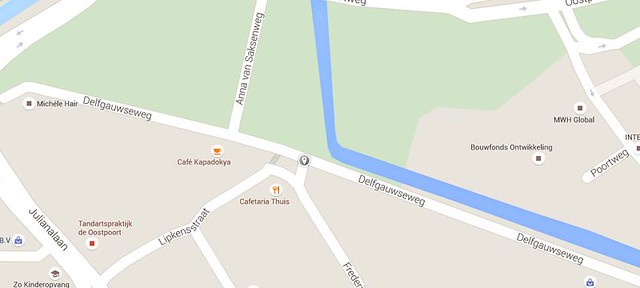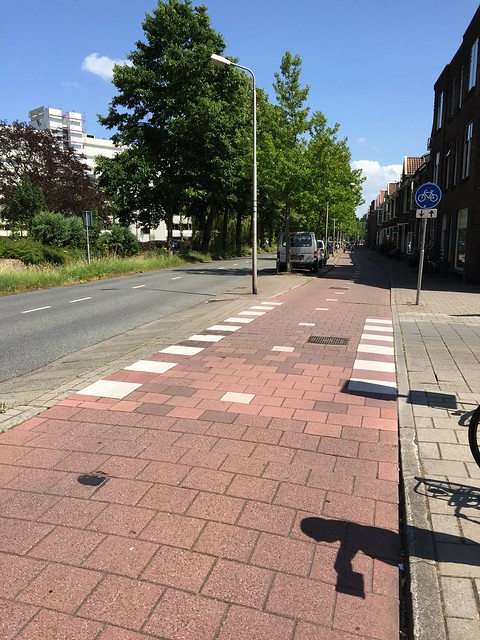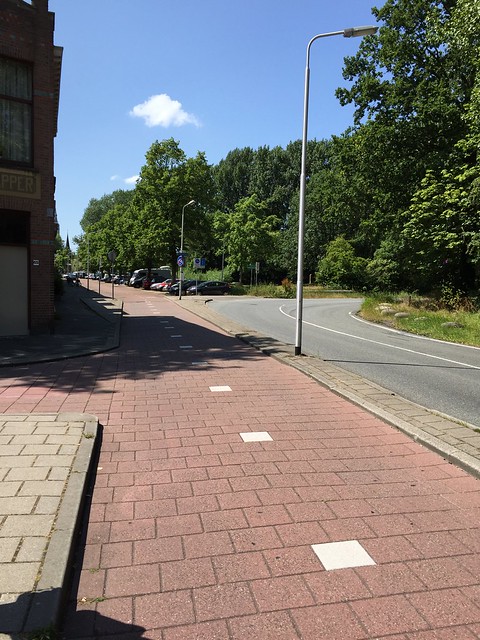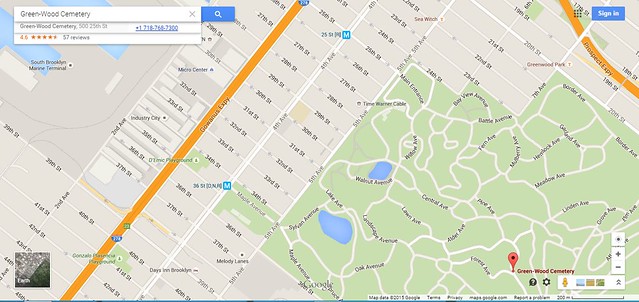Location A
Christine McGeein, Chase McLaughin, David Roglieri, Tiffany Ma, William Huang
Observation:
Delfgauseweg is a facility that consists of a two-way cycle track adjacent to a two-way road. Where the group stopped to observe this facility is at the pin on Figure 1.
Figure 1 – Delfgauseweg
The cycle track runs parallel between a parking lane and the road; while the road runs parallel between a canal and the cycle track as seen in Figure 2.
Figure 2 – Two-lane road and two-lane cycle track
However, the road curves with the canal as filled by angle-parked cars instead. Figure 3 shows the curve and how the parking is placed in front of it.
Figure 3 – Road curve
There is also a median between the road and the cycle track for separation and traffic signs as seen in Figure 4. The sign also warns drivers of oncoming bicycle traffic.
Figure 4 – Median
On the cycle track, it is marked with “Zoef” on the floor to label cycle freeways. Figure 5 is an image of the label.
Figure 5 – Zoef
Delfgauseweg used to be a facility that had a two-way road with cycle tracks on both sides, but was later converted to the present condition for safety and efficiency reasons. With the original design, bikers on the canal side would have to cross the road and the other cycle track to get onto the city side. With cars going as fast as they are, it is very dangerous for the cyclist to make the turn. With the new design, there is division between the cars and the bicycles and the pressure of crossing traffic to get over onto the city side is put onto the drivers. If cars need to get over to the city side, there are elephant feet striping and raised crossings or “crossing tables” to slow down the cars and make sure that they are cautious when they turn in. Figure 6 shows the elephant feet striping and crossing table.
Figure 6 – Elephant feet striping and crossing table
Furthermore, space was able to be saved with a two-way cycle track than one cycle track on both sides since there are different width requirements for the two types of tracks.
Everyone that were observed followed the rules and moved as they should. Only one car made a right turn into the city side, but the speed of the car was slowed down by the crossing table. There were no issues using the facility. However, should there be heavy car, bicycle, or pedestrian traffic, there might be some difficulty. The two-way road for the cars can only fit one car per direction in the lane. If a car was making a left turn into the city side, it might face heavy oncoming traffic in the other direction or heavy bicycle and pedestrian traffic. Should this happen, there could be a build up of cars on that lane because the road isn’t wide enough to pass a waiting vehicle. Luckily, the traffic there is not heavy.
Recommendation:
Our group suggests to implement these features (two-lane road parallel to two-lane cycle track, median separation, crossing table, and elephant feet striping) on 5th Ave in Brooklyn, NY next to Greenwood Cemetery seen in Figure 7.
Figure 7 – 5th Ave next to Greenwood Cemetary
Here, the right side of the road is blocked off by the cemetery similar to how a side of the road was blocked off in Delfgauseweg by the canal. There is also a two-way road and cycling in both directions. Even though there are no markings for cyclists, the road is still heavily used by cyclists because it is a straight path and riders don’t need to worry about colliding with drivers coming from the direction of the cemetery. Figure 8 shows a street view of 5th Ave with a cyclist using the facility.
Figure 8 – Street view of 5th Ave
Should there be a two-way cycle track to the left of the vehicle traffic, it would be a lot safer for cyclists going north, as the one depicted in the photo, that want to make a left turn into the local streets. Cyclists cannot make a right turn into the cemetery so why put them in the danger of crossing two-way vehicle traffic if they needed to make a left turn? The road is also wide, straight, and lacks signage, which encourages drivers to subconsciously drive fast as they go down this road. Should there be elephant feet striping or crossing tables, the speed of traffic can be controlled. Less accidents can happen on this avenue that goes on for twelve consecutive streets.






